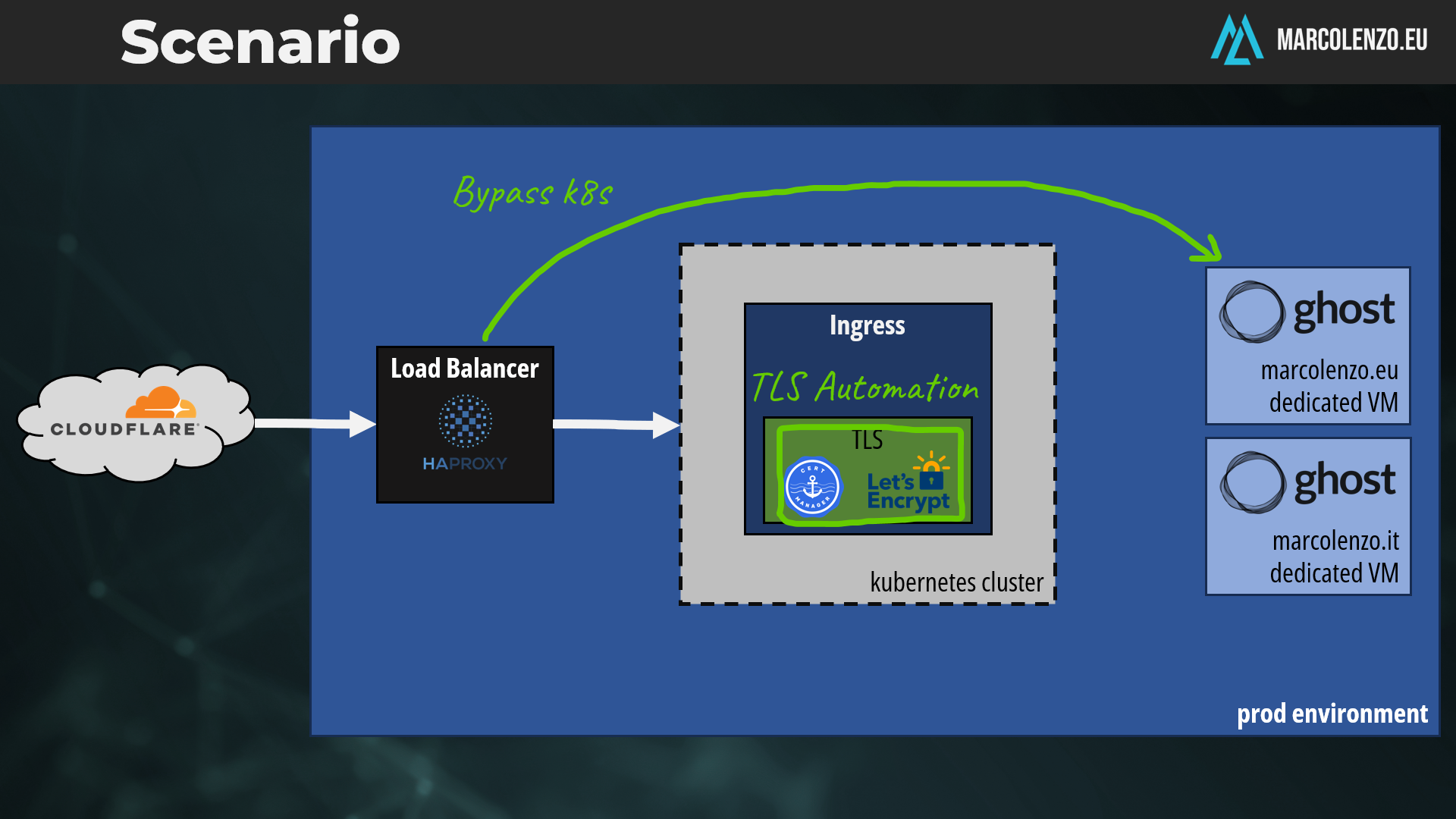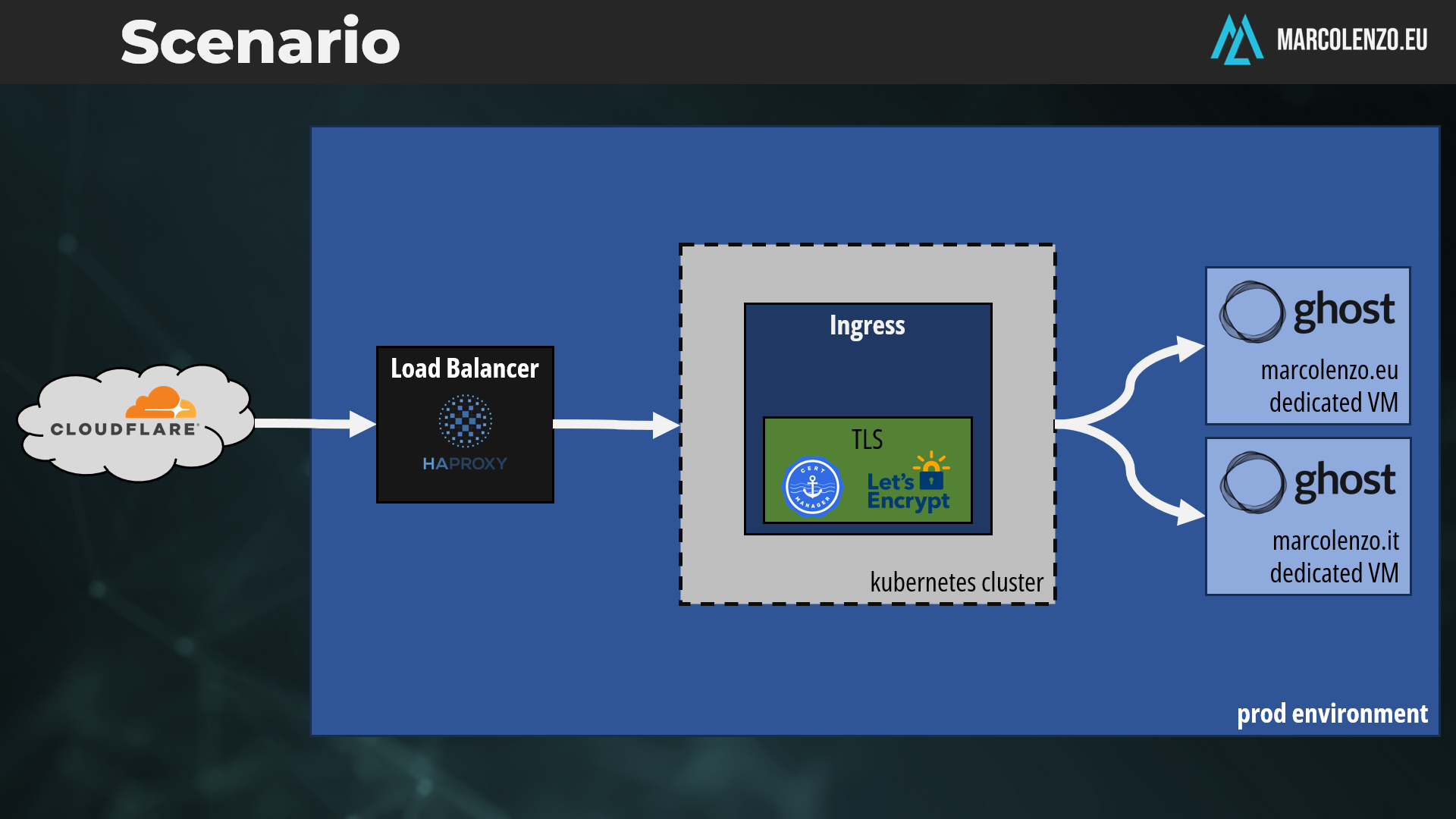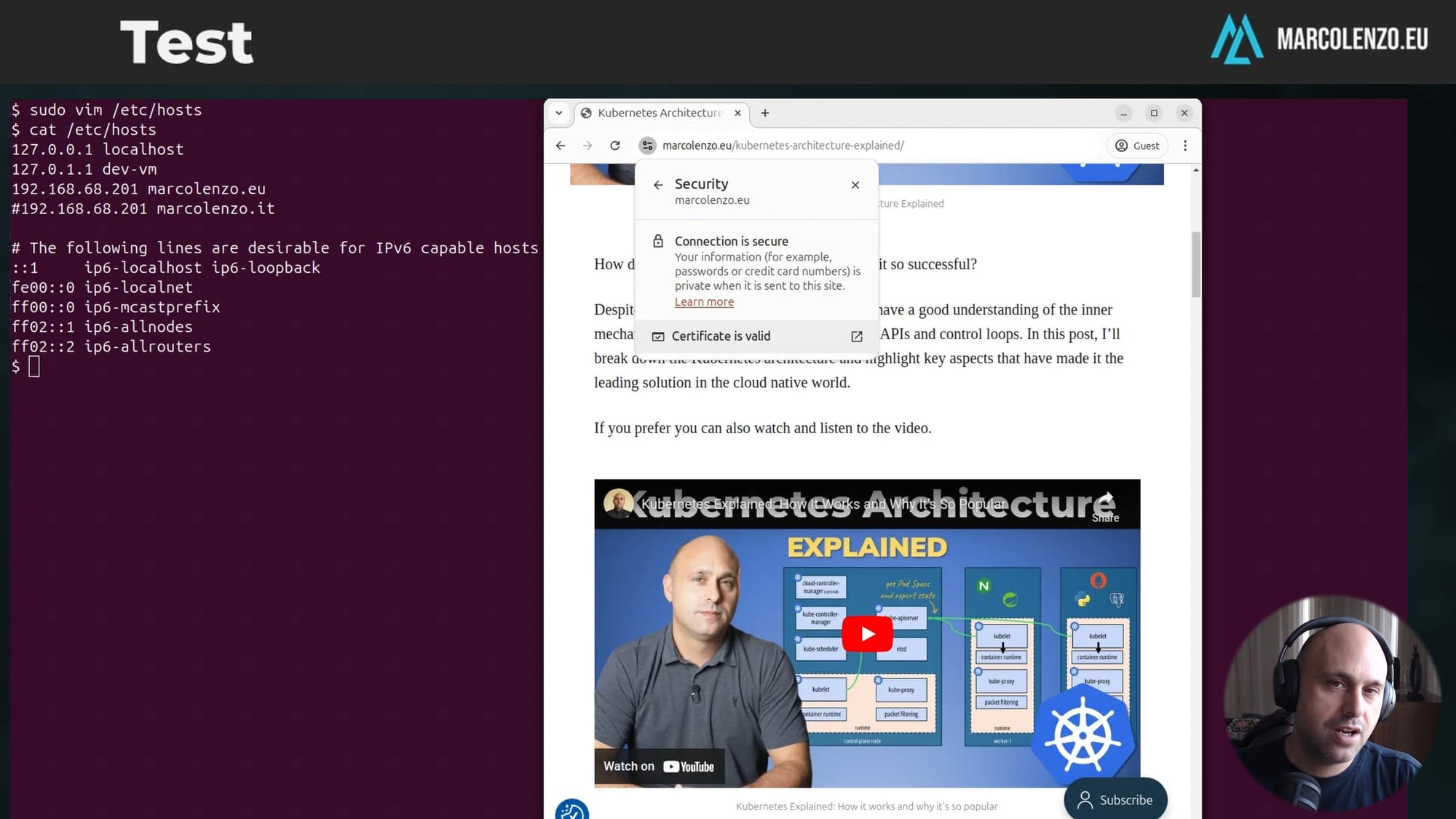How a Kubernetes Service with No Selector Simplified My Workflow
Did you know Kubernetes can manage TLS certificates for applications running outside the cluster? If this is news to you, you're in for an insightful tutorial! This guide explains how I use Kubernetes to route traffic and manage certificates for external applications, solving key challenges along the way.
Prerequisites
Before diving in, ensure you have experience configuring an Ingress controller and Cert Manager. If you’re unfamiliar with these, no worries! Check out these step-by-step blog posts and come back when you're ready:
- Kubernetes Free TLS Certificate Management
- How to integrate cert-manager with Let's Encrypt and Cloudflare
The Problem
Not all applications are Cloud Native, i.e. not all applications are designed to thrive in a containerized environment. I encountered this issue with Ghost, the open-source blog and newsletter platform I use for my websites.
Although I managed to deploy Ghost on Kubernetes, it wasn’t built with containers in mind, and tasks like upgrades and backups using the Ghost CLI were challenging. To avoid friction, I migrated my blogs to VMs using Terraform and Ansible.
While this solved some issues, it created two new ones:
- Reconfiguring the Load Balancer to route traffic to VMs added manual work I wanted to avoid.
- By bypassing Kubernetes, I lost the automated certificate management provided by Cert Manager, Let's Encrypt, and Cloudflare.
While I know there are tools like certbot, I didn't want to re-invent the wheel in the context of my environment where deployments on VM are the exception.
This led me to a critical question:
Can I route traffic from a Kubernetes Ingress to an external application?

The answer is yes—and it’s surprisingly simple!
The Solution
The official Kubernetes documentation offers a solution. By using a Service without a selector alongside an Endpoints object, you can abstract external backends, such as applications running outside the cluster.

Here’s the setup:
Step 1: Create a Service Without a Selector
A Service without a selector prevents Kubernetes from associating it with Pods. Instead, you define the target manually.
apiVersion: v1
kind: Service
metadata:
name: ghost-service
spec:
type: ClusterIP
ports:
- name: http
port: 80
targetPort: 2368 # target port exposed by the external app
selector: {} # empty selectorNote: The targetPort matches the port of your external application.
Step 2: Define the Endpoints
The Endpoints object specifies the external application’s address and port. Ensure the Endpoint name matches the Service name.
apiVersion: v1
kind: Endpoints
metadata:
name: ghost-service # must match the service name
namespace: default
subsets:
- addresses:
- ip: 192.168.68.171 # target host
ports:
- port: 2368 # target portStep 3: Configure the Ingress
Finally, use an Ingress to route traffic to the Service without a selector. Here's a simple example:
apiVersion: networking.k8s.io/v1
kind: Ingress
metadata:
annotations:
cert-manager.io/cluster-issuer: letsencrypt-prod # triggers cert manager
name: ghost-ingress
spec:
ingressClassName: nginx
rules:
- host: marcolenzo.eu
http:
paths:
- backend:
service:
name: ghost-service # our service with no selector
port:
number: 2368
path: /
pathType: ImplementationSpecific
tls:
- hosts:
- marcolenzo.eu
secretName: ghost-cert # cert is stored here
status:
loadBalancer: {}This setup ensures Kubernetes manages your TLS certificates while directing traffic to your external application.
Testing the Configuration
To test, modify your hosts file to point your domain to a Kubernetes node, or to a Load Balancer in front of the cluster, should you have one.
sudo nano /etc/hosts
# Add this line
192.168.68.201 marcolenzo.eu # my HAProxyOpen the application in a browser. If everything is configured correctly, the traffic routes seamlessly, and the Let's Encrypt certificate is valid.

Summary
In this tutorial, we’ve learned that:
- Not all applications are built to run in Kubernetes.
- You can route traffic from Kubernetes to external applications using an Ingress, Service without a selector, and Endpoints.
- Kubernetes can act as an API Gateway and manage TLS certificates, even for external workloads.
If you found this post helpful, great news! I’m creating a free Kubernetes course with nine modules and over 30 lessons. Subscribe to my YouTube Channel and this website to stay updated.
Thank you for reading—don’t forget to share this post to help others discover this approach!
